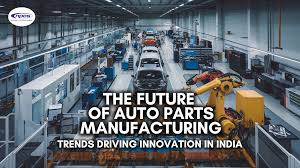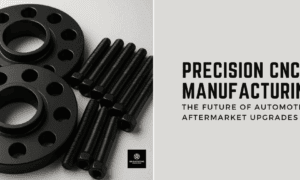In an era marked by a growing awareness of the environmental consequences of our actions, the automotive industry is revving up its engines for change. From fuel-efficient engines to electric vehicles, the focus on sustainability is more prominent than ever. One significant aspect of this green shift is the increasing use of polymer car parts. In this article, we will delve into the environmental impact of these components and explore how they contribute to sustainability in the fast lane.
Introduction
The Polymer Revolution
Polymer car parts, also known as plastic car components, have become an integral part of modern automotive design. The days of solely relying on metal components are gradually giving way to lightweight and durable polymers. These parts include everything from bumpers and door panels to interior components like dashboards and consoles. The transition to polymers is not merely a matter of following a trend; it’s a strategic move towards a more sustainable future.
Lightweight and Fuel Efficiency
One of the most prominent advantages of using polymer car parts is their lightweight nature. Unlike traditional metal components, polymers are significantly lighter. This reduction in weight contributes to improved fuel efficiency and reduced greenhouse gas emissions. Lighter vehicles require less energy to operate, resulting in a positive impact on the environment. This eco-friendly characteristic aligns perfectly with the automotive industry’s ongoing efforts to reduce its carbon footprint.
Recyclability and Reusability
Polymer car parts offer another sustainability advantage through their recyclability and reusability. In contrast to metals that may deteriorate with each recycling cycle, polymers can be recycled multiple times without a significant loss in quality. This means that old polymer car parts can be transformed into new components, reducing the need for raw materials and the energy-intensive processes required to create them. Additionally, when car parts reach the end of their life cycle, they can often be reused for other applications, minimizing waste and conserving resources.
Durability and Longevity
Despite their lightweight nature, polymer car parts are impressively durable. They can withstand the rigors of daily use, harsh weather conditions, and even minor collisions. This durability reduces the need for frequent replacements, which, in turn, results in fewer discarded car parts filling up landfills. The longer lifespan of these parts is a testament to their eco-friendliness, as it contributes to less waste and fewer resources consumed in manufacturing replacements.
Reduced Production Energy
Manufacturing polymer car parts requires less energy compared to their metal counterparts. The production process of polymers typically involves lower energy consumption, making it an environmentally friendly choice. Furthermore, the lightweight characteristic of polymers translates into reduced transportation costs, as shipping lighter parts consumes less fuel. All of these factors contribute to a reduced carbon footprint, which is essential in our pursuit of a sustainable future.
Improved Design Flexibility
Polymer car parts offer unmatched design flexibility. Engineers and designers have the freedom to create intricate and aerodynamic shapes that enhance vehicle performance. The improved aerodynamics can further reduce fuel consumption, as the vehicle encounters less air resistance while on the road. This adaptability in design is a testament to the innovative solutions that polymers bring to the automotive industry in its quest for sustainability.
Challenges and Considerations
While the shift towards polymer car parts is undoubtedly a step in the right direction, it’s important to acknowledge that there are some challenges and considerations to be aware of.
Recycling Infrastructure
One challenge is the need for an efficient recycling infrastructure. To maximize the environmental benefits of polymers, it’s crucial to have a well-established system for collecting, processing, and recycling old car parts. This requires collaboration between automakers, recycling facilities, and government entities to ensure that polymers are given a second life, reducing the burden on landfills.
Material Selection
The choice of polymer materials is critical. Not all polymers are created equal, and some may have a higher environmental impact than others. It’s important for the automotive industry to carefully select materials that are not only durable but also environmentally friendly. Research into biodegradable polymers and innovative recycling techniques is ongoing and holds great promise for further reducing the industry’s environmental impact.
End-of-Life Considerations
Addressing the disposal of polymer car parts at the end of their lifecycle is another important consideration. To fully embrace sustainability, the industry must develop efficient ways to manage the disposal of these components responsibly. This might involve turning old polymers into energy sources or ensuring that they are processed in an eco-friendly manner.
Conclusion
In the fast-paced world of automobiles, sustainability is the driving force of change. The increasing use of polymer car parts is a testament to the industry’s commitment to reducing its environmental impact. These lightweight, recyclable, and durable components are paving the way for a more sustainable future, one where vehicles are not just efficient on the road, but also in terms of their environmental footprint.
As we journey towards a greener automotive industry, it’s important to address the challenges associated with the shift to polymer car parts. From recycling infrastructure to responsible material selection and end-of-life considerations, there are obstacles to overcome. However, these challenges are surmountable, and the benefits of polymer car parts are worth the effort.
In the quest for sustainability, polymer car parts have accelerated the automotive industry towards a more eco-friendly future. As technology continues to advance, and as our understanding of materials and their impact on the environment deepens, we can expect even more innovative and sustainable solutions to emerge. The road ahead may be long, but with polymer car parts leading the way, the journey is becoming a more sustainable and eco-conscious one.



































